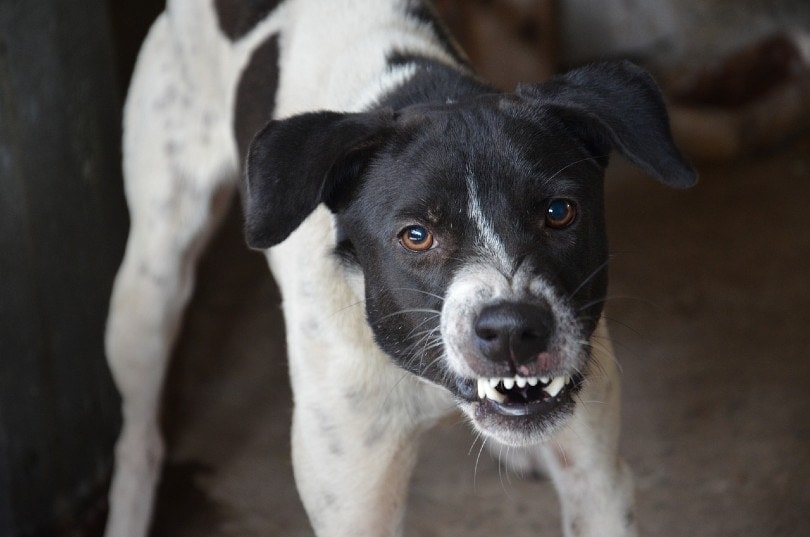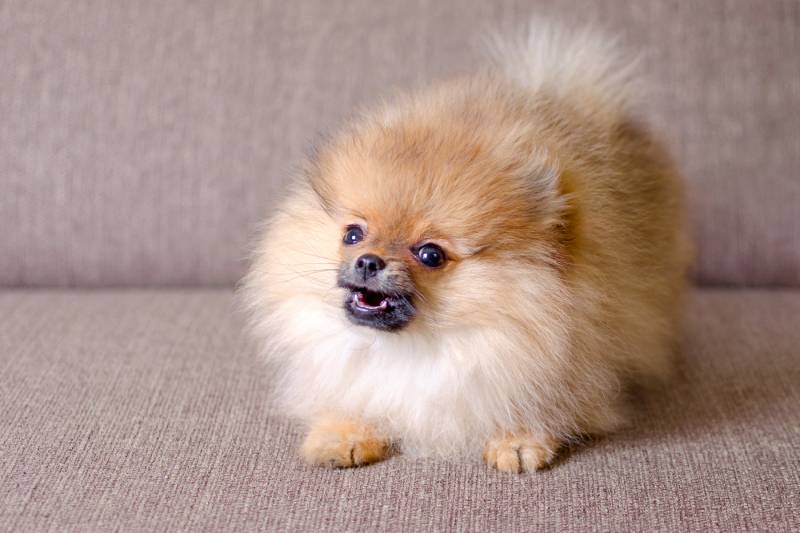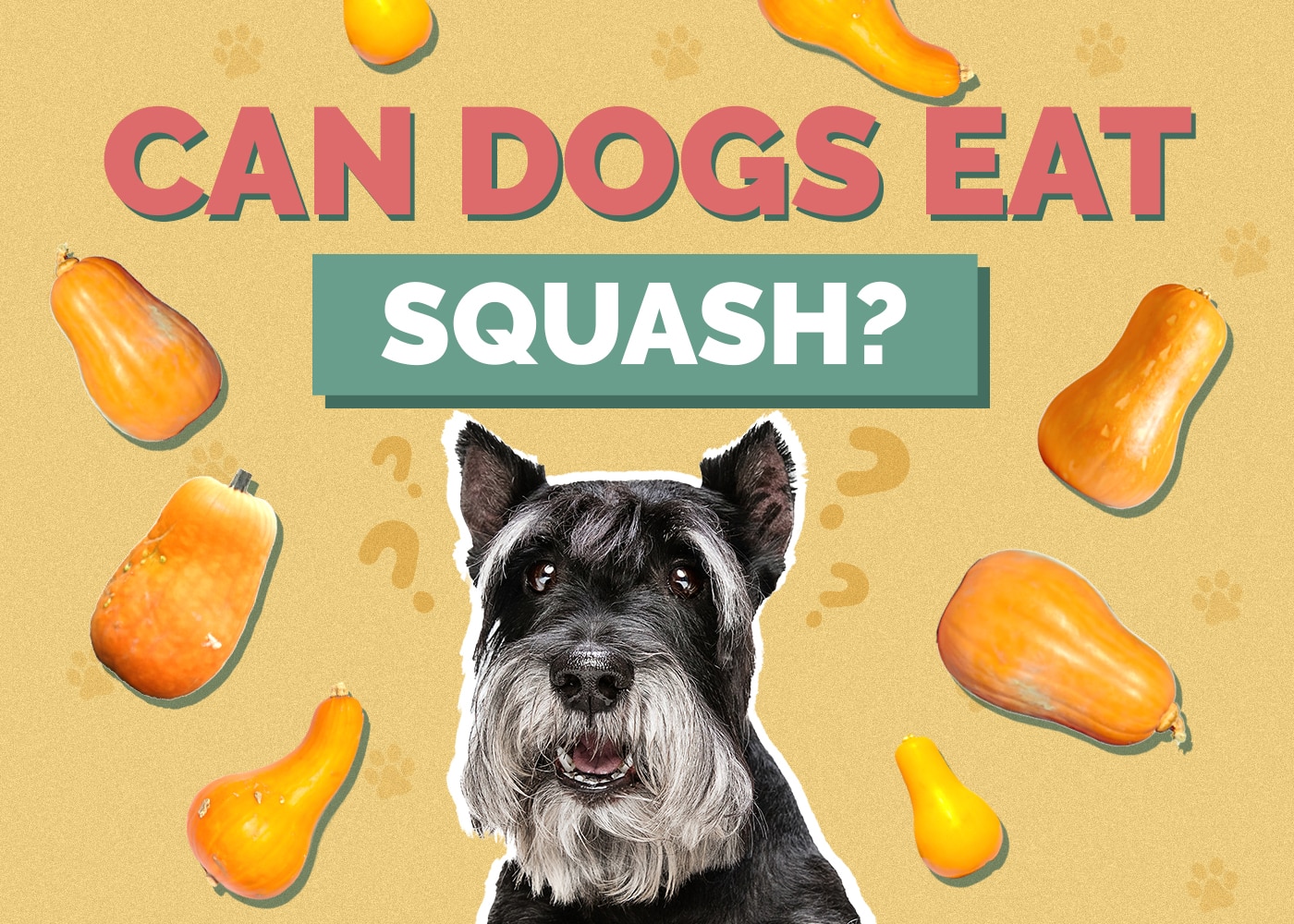Why Do Dogs Growl? 5 Reasons & How to Stop It
Updated on

Since dog owners usually spend most of their day hanging out with their dogs, they quickly learn the little patterns in a dog’s behavior. Dogs use growling to communicate various needs. This is why you can often see them growling when they are frustrated and even when happy and excited.
If your dog’s growling confuses you and you’re unsure about its reason and whether this behavior is acceptable, read the article below, where you’ll find the most common reasons behind a dog’s growling. Some of these situations are perfectly normal, while others will need some intervention from you to stop the behavior.
The 5 Reasons Why Dogs Growl
1. Playtime Growling
Playtime growls are one of the most common growls you will notice in your dog, especially a puppy. This behavior is entirely normal and non-threatening, and the pup may simply be trying to express excitement. You will most likely hear these growls when your dog plays tug of war, wrestling, or is chasing their favorite toy.
Since playtime is an entirely regular occurrence in dogs, you don’t need to try and remedy this behavior in any way. However, it is crucial to maintain a controlled and monitored playtime, especially with children around. Some dogs may get too carried away during play and suddenly turn more aggressive. If you notice your dog getting too carried away, drop the toy, and redirect their attention.

2. Growling at Other Dogs
Other times you will notice your dog growling at other dogs. You may hear your dog growl just as another dog approaches them, and while this may be their first response, it doesn’t necessarily mean it’s aggressive. Sometimes a dog’s growl is just a way to warn other dogs or humans by letting them know they need more space or feel uncomfortable.
A dog growling in a stressful situation is a normal reaction that cues you to interrupt and take control. When your dog clearly shows anxiety or fear by growling at another dog, the best you can do is remove them from the situation before it escalates.
3. Possessive Growling
Another typical growl you will hear in your dog is when you or another dog tries to take their toys. Some dogs can become very possessive of their toys and even show aggression around them.
The best way to avoid this is to work with your pup on this from an early age. It’s best to teach your dog some helpful commands such as “drop it” or “leave it” and get them used to having their toys taken away.

4. Food Guarding
Food guarding accompanied by growling usually doesn’t indicate aggression but is a warning, although this behavior is unacceptable. While you may recognize the signs, your children might be unable to, creating a risky situation. While food guarding for dogs is their instinct, there will be situations when you must take away their food or remove something inedible from their mouth.
This behavior usually develops in a young puppy because they must compete for food with their littermates. If young puppies have limited food growing up, and this behavior is encouraged, it can become firmly established in these puppies later in life.
When you get a puppy into its new home, it is vital to start small exercises right away to avoid developing food-guarding behavior. Start by offering your puppy kibble straight from your hand, one piece at a time. Then practice taking away your dog’s food gently and calmly while they’re eating, while using positive reinforcement when they don’t react or growl. This will develop a sense of trust and will relax the puppy.
However, if growling during feeding and aggression persists to the point where it becomes dangerous, you need to consult an animal behaviorist or dog trainer for professional help.
5. Pleasure Growling
Pleasure growls are one of the most satisfying sounds a dog can make. Think of them as something similar to a cat purring. You will hear your dog growling from happiness and contentment, mostly during cuddling or during bath time (if they enjoy bath time). They are entirely normal and are a way of expressing pleasure and gratitude.

Conclusion
After learning about your dog’s different growls, you can finally have the skill to distinguish the good from the bad ones. Since dogs cannot communicate their desires through words, they try to tell us what is wrong by using different sounds. It is our job to interpret a dog’s feelings and, if a situation makes them uncomfortable, remove them from the situation.
You Might Also Be Interested In:
Featured Image Credit: monicore, Pixabay












